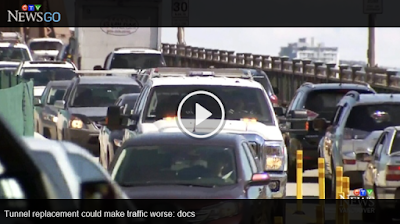I will be taking a break from blogging until after the Labour Day long weekend. I’m in New Zealand at the moment. Auckland is New Zealand’s largest region, and has some of the same challenges that we have in Metro Vancouver. Providing enough affordable housing is top of mind in the region, as is the provisioning of a multi-modal transportation network. Their central government, just like our province, is obsessed with building wide freeways even if it goes against regional sustainable growth objectives.
 |
| Me standing by Canada Lane in Auckland. Select image to enlarge. |
Over the past weekend, I had the pleasure of having a tour of Auckland and its transportation network with Darren Davis who works for Auckland Transport. AT is like TransLink, but on steroids. Expect for state roads (which are 99.99% freeways), they are responsible for all transportation in the region from sidewalks and roads, to public transit. The agency is arms-length from politicians, but unlike TransLink, has the resources to actually implement a quality transportation network.
 |
| Eye and ears at a bus exchange in Auckland is key to providing high-quality customer service and a safe environment. Select image to enlarge. |
Over the last few years, Auckland Transport has been working hard to create a multi-modal transportation network. While there is much work to be done —most of Auckland’s land-use doesn’t encourage walking, cycling, or the use of public transit— Metro Vancouver and our provincial government could certainly learn a few things from the operation modal of Auckland Transport.
One of the things that I noticed right away was about the infrastructure in Auckland. It is in an excellent state of repair. Talking with some of the folks at Auckland Transport, I learned that maintaining infrastructure takes priority over expansion. I also learn that taxation levels are set to ensure that infrastructure can be adequately maintained.
 |
| High-quality, protecting cycling infrastructure is being rapidly built in Auckland. Select image to enlarge. |
When I get back to Metro Vancouver, I will share more observations from Auckland and how it could apply in our region.




























